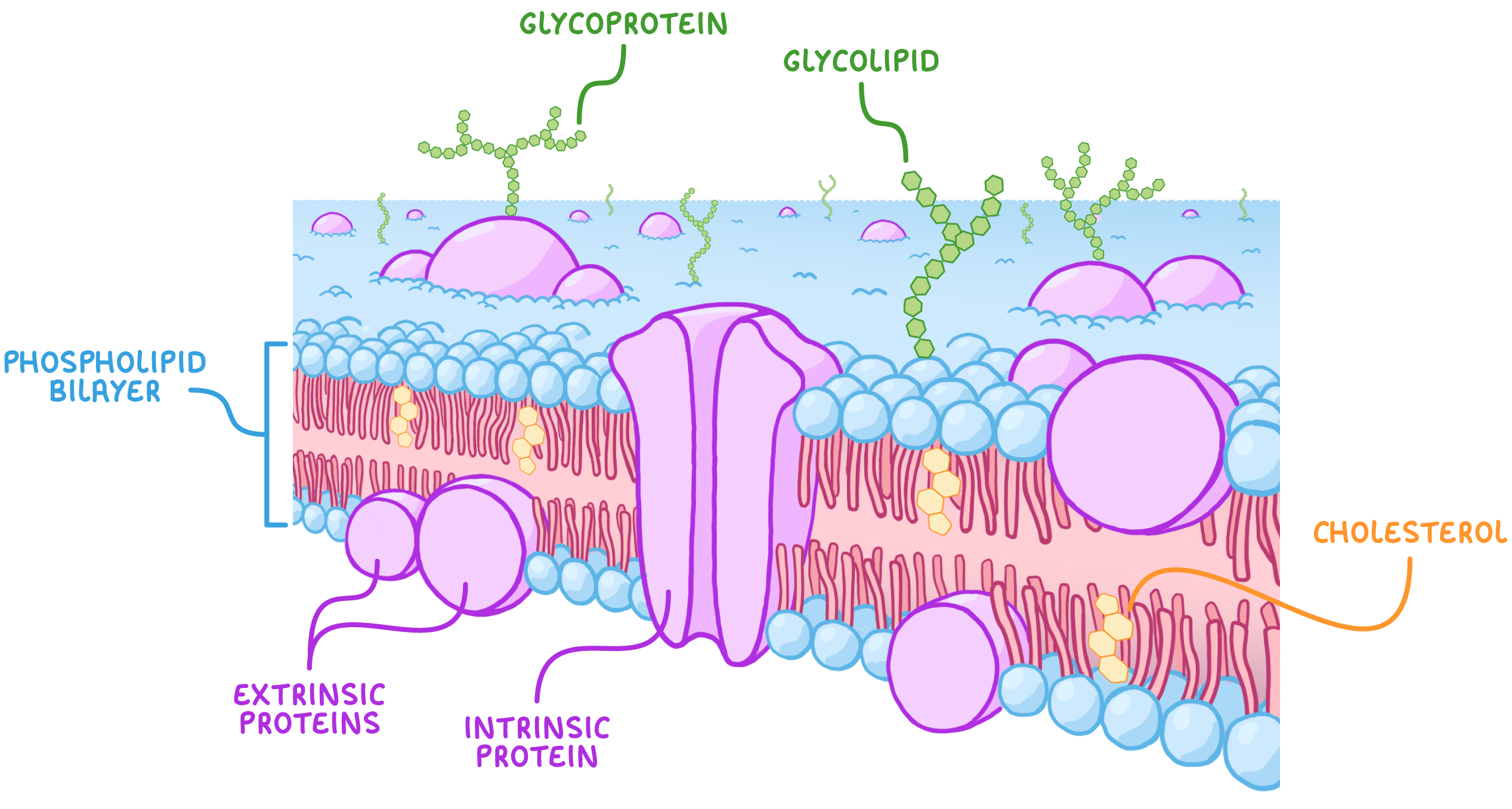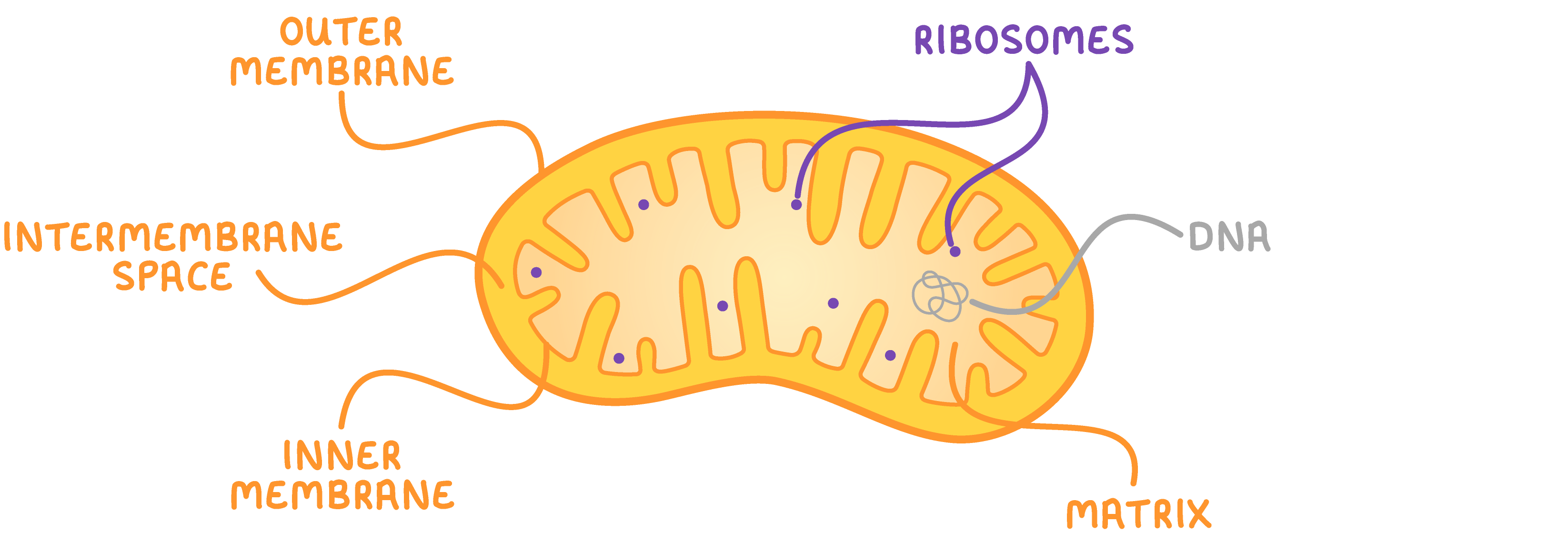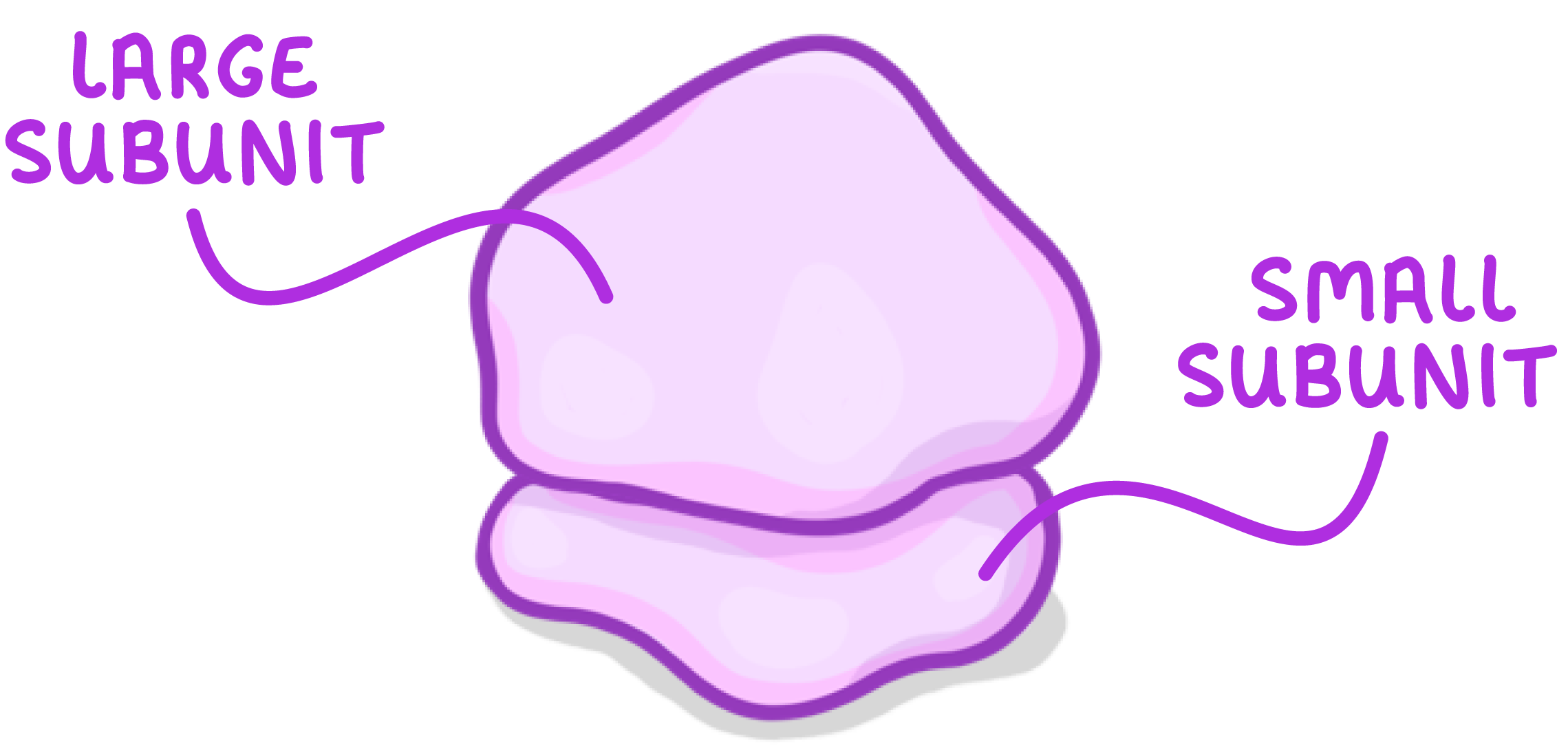Eukaryotic Cells: Animal Cells
This lesson covers:
- The difference between eukaryotes and prokaryotes
- The structure of animal cells
- The functions of their cell parts
Eukaryotes and Prokaryotes Living organisms can be divided into two main groups:
Eukaryotic cells are more complex, contain membrane-bound organelles, and have their DNA in the form of chromosomes within a nucleus. |
Animal cells The diagram below shows all the organelles found in a typical animal cell.  |
Nucleus The nucleus is the largest organelle within an animal cell.  |
Structure:
Functions:
|
Cell-surface membrane The cell-surface membrane is also known as the plasma membrane.  |
Structure:
Functions:
We cover the structure in more detail in our lesson on the phospholipid bilayer. |
Mitochondria Mitochondria are found in large numbers in cells that requires lots of energy.  |
Structure:
Function:
|
Ribosomes Ribosomes are very small organelles found in the cytoplasm or attached to rough endoplasmic reticulum. The size of ribosomes are measured in S units. Eukaryotic cells contain 80S ribosomes.  |
Structure:
Function:
|
Golgi apparatus The Golgi apparatus, sometimes called the Golgi body, consists of cisternae and vesicles.  |
Structure:
Functions:
|
Rough endoplasmic reticulum (RER) Rough endoplasmic reticulum is covered with ribosomes (that's why it's rough - the ribosomes cause the little bumps).  |
Structure:
Function:
|
Smooth endoplasmic reticulum (SER) Smooth endoplasmic reticulum lacks ribosomes.  |
Structure:
Function:
|
Lysosomes Lysosomes are round organelles with no clear internal structure.  |
Structure:
Functions:
|
Cytoskeleton The cytoskeleton is present throughout the cytoplasm and provides structure and support to the cell. It consists of 3 main components: microfilaments, microtubules, and intermediate filaments. |
Microfilaments:
|
Microtubules:
|
Intermediate filaments:
|